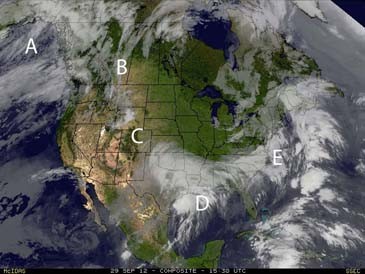Make a sketch map of a dome, a basin, an upright synform and a plunging upright synformal antiform.
What will be an ideal response?
Answer: See Figure Q11.1. Note that younging direction is essential for identifying a synformal antiform. A dome exposes the lower unit in its center, but it does not have to be the oldest (it could be tetonostratigraphy or inverted stratigraphy for that matter). Similarly, a basin exposes the uppermost layer in the core. It is usually the youngest, but it does not have to be. The upright syncline shows a symmetric map pattern, since the two limbs are dipping the same amount at any given distance from the axial plane. Always draw a profile to test that your sketch map is correct.
You might also like to view...
Why is coal slurry a problem?
What will be an ideal response?
Scientists use proxies to study climate in order to measure
A) current levels of carbon dioxide. B) changes in temperature over the past 100 years. C) changes in the ozone layer over the past 30 years. D) climates hundreds and thousands of years ago.
Which of the following locations would best represent a storm track characterized as bringing cold moist air to inland Canada?
A. A B. B C. C D. D E. E
Suppose the eye of a hurricane passed directly over you, and you survived the experience. If winds were from the northeast as the eyewall first approached you, from what direction did the winds blow when the eyewall reached you the second time?
a. ?NW b. ?NE c. ?SE d. ?SW e. ?N